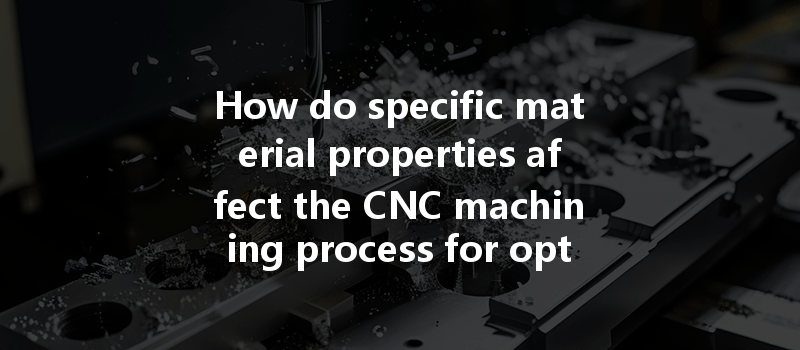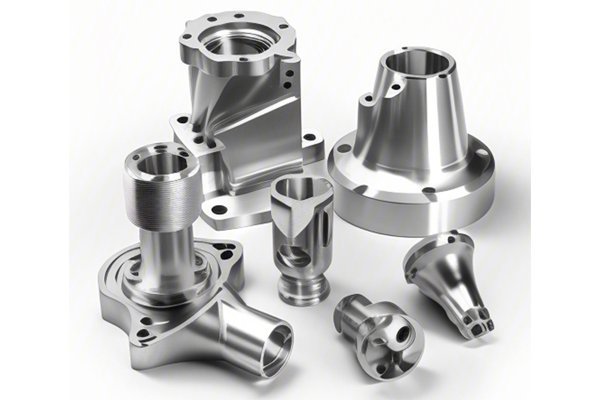In the world of manufacturing, CNC (Computer Numerical Control) machining has emerged as a transformative technology, revolutionizing how we produce complex parts with unparalleled precision. At YL Machining, we are committed to constant innovation and excellence in processing a wide array of materials. One of the critical factors that dictate the machining process’s efficiency, quality, and cost is the material properties of the components being manufactured.
This article aims to delve deep into how specific material properties affect the CNC machining process, ensuring you understand how to optimize production successfully. We will cover everything from mechanical properties, thermal characteristics, machinability ratings, and much more. This knowledge will empower businesses to make informed decisions when choosing materials for CNC machining, ultimately leading to improved efficiency and product quality.
Understanding Material Properties
To comprehend how material properties affect CNC machining, we first need to establish what we mean by “material properties.” Material properties can be grouped into several categories:
Understanding these categories is fundamental to evaluating how they will determine the CNC machining process.
Mechanical Properties and CNC Machining
Tensile strength is a key mechanical property that indicates the maximum amount of tensile (stretching) stress that a material can withstand before failure. In CNC machining, materials with high tensile strength can often be machined at higher speeds, enhancing productivity.
For instance, stainless steel, known for its high tensile strength, requires specialized tooling and techniques to optimize machinability effectively. Conversely, materials like aluminum with lower tensile strength allow for faster machining and less wear on tooling.
Hardness measures a material’s resistance to deformation or indentation. Different machining processes, such as milling or turning, can be particularly affected by materials with high hardness, like titanium or certain tool steels, which require specific cutting tools made of material harder than the workpiece.
At YL Machining, we often employ carbide tooling to machine harder materials efficiently. Understanding the hardness of the material at the outset allows for better planning regarding tooling and operation costs.
Ductility refers to a material’s ability to deform under tensile stress, indicating how well a material can be stretched into a shape without breaking. Ductile materials, such as copper and most aluminum alloys, can be more forgiving during machining.
Ductile materials facilitate better chip formation during cutting, as they tend to produce continuous chips rather than brittle fragments, enhancing the machining process’s overall smoothness and efficiency.
Toughness measures a material’s ability to absorb energy and deform plastically before fracturing. It’s an essential property for materials exposed to dynamic stresses. Tough materials like low alloy steels often require specific feed rates and cutting speeds to avoid tool rupture during machining.
Understanding the toughness of a material allows for appropriate fixtures and tooling arrangements, ensuring safety in CNC operations.
Thermal Properties and Their Influence

Thermal conductivity affects how well heat is transferred through a material. In CNC machining, materials with high thermal conductivity, such as copper, dissipate heat quickly, reducing the risk of thermal deformation.
Conversely, materials with low thermal conductivity can build up heat more rapidly, necessitating cooling strategies, such as flood cooling with cutting fluids or air blasts, to ensure quality machining.
Melting point is a critical thermal property that dictates the operational temperature limits of machining equipment. For example, materials like polymers have considerably lower melting points than metals, leading to potential challenges when machining them if temperatures are not adequately managed.
At YL Machining, we keep in mind the melting points of materials to adjust tooling guidelines and ensure optimal performance, especially when machining sensitive plastics or composites.
Chemically Reactive Materials
Corrosion resistance is especially crucial for steel and aluminum alloys, as their longevity can be significantly impacted by environmental conditions. Materials such as 316 stainless steel display exceptional corrosion resistance, making them suitable for marine or chemical applications.
Knowing the corrosion characteristics of these materials helps us choose appropriate surface treatments — such as anodizing or applying protective coatings — prior to CNC machining for ultimate durability.
The oxidation potential affects how materials react in high-temperature environments. For instance, high-performance alloys may develop an oxide layer that can impact machining outcomes.
Proper evaluation of the oxidation potential will guide our choice of machining parameters to avoid oxidation-related issues during processing.
Physical Properties and Their Role
Density can influence both the machining speed and the stability of the workpiece on a machine. Heavier materials often require more robust fixtures to ensure stability during high-speed machining.
For instance, denser metals like brass will generally necessitate slower machining rates and careful handling compared to lighter materials, such as aluminum.
Porosity, commonly found in certain ceramics and composites, can result in unpredictable machining outcomes, including increased wear on tools or an uneven surface finish.
Understanding the porosity of materials allows us to select appropriate machining strategies, mitigating potential issues during the manufacturing process.
The impact of specific material properties on CNC machining is profound and multifaceted. By understanding the key mechanical, thermal, chemical, and physical properties of different materials, manufacturers can adopt strategies that optimize machining processes, enhance product quality, and minimize production costs.
At YL Machining, we continuously integrate our understanding of material properties into our CNC machining solutions. Our commitment to using advanced technologies, alongside a deep knowledge of materials, allows us to deliver exceptional results for our clients.
As we move forward, it’s essential to stay informed about the evolving landscape of materials and technology in CNC machining. The more knowledge we share, the stronger we become in our endeavors!
For more information on how specific material properties can impact your next CNC project or to discuss your unique machining needs, reach out to us at YL Machining. Together, let’s create something remarkable.
—






